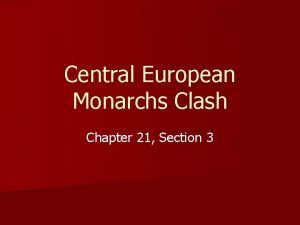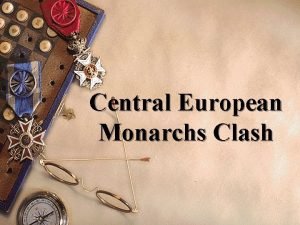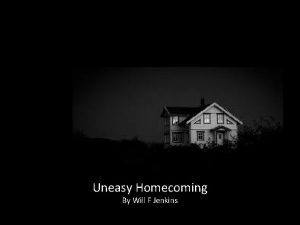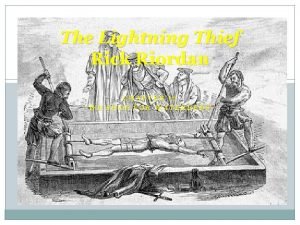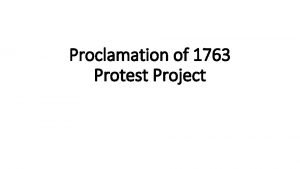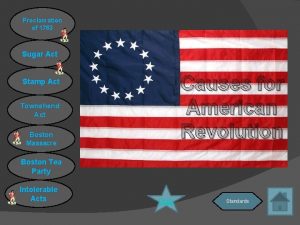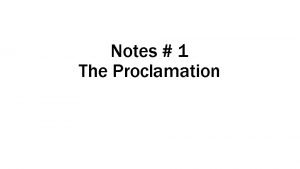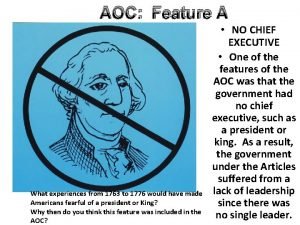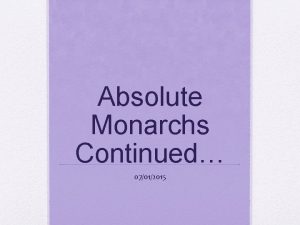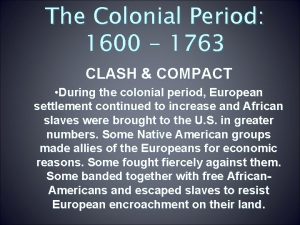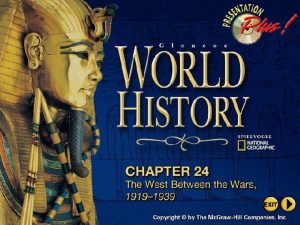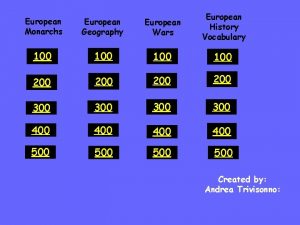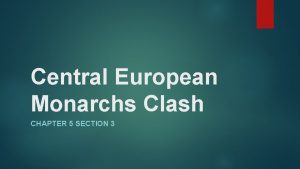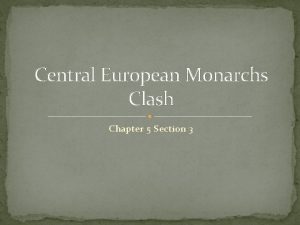European Monarchs Clash 1600 1763 An Uneasy Peace











- Slides: 11

European Monarchs Clash (1600 -1763)

An Uneasy Peace • During the protestant reformation, German princes fought religious wars with one another. • The Peace of Augsburg (1555) allowed each prince to choose the religion of his subjects. • Religious differences created distrust and suspicion between the Lutheran and Catholic princes of Germany • Both Catholic and Lutheran princes tried to gain power and alliances • Lutherans formed the Protestant Union in 1608 • Catholics formed the Catholic Leage in 1609

Bohemian Protestants Revolt • The Holy Roman Empire claimed authority over most of Germany, as well as Protestant Bohemia • The Holy Roman Emperor was Ferdinand II, a devout Catholic • When he attempted to shut down protestant churches in Bohemia, the Bohemians revolted • 1618 Defenestration of Prague— Ferdinand’s representatives were thrown out of a window in protest • Ferdinand sent an army into Bohemia • German Lutherans sided with Bohemia • German Catholics sided with Ferdinand

The Thirty-Years War (1618 -1648) • The conflict soon spread to most of Central Europe • During the first twelve years of the war the Catholic Hapsburg armies crushed the Protestants • Ferdinand paid his army by allowing them to loot German villages • Devastated everything in their path • In 1630 Sweden joined the war on the side of the Protestants, and successfully drove Catholic forces out of Northern Germany • In 1635, France sent aid to the Protestant forces as well • Though Catholic, France was more worried about the power of the Hapsburg family than they were about Protestants

Results of Thirty-Years’ War • The Peace of Westphalia officially ended the war in 1648 • • • Weakened Spain and Austria Granted new territory to France Made German princes independent from Holy Roman Empire Ended religious wars in Europe Forbid empires from forcing their religion on subject peoples • The war devastated Europe • Most combatant powers went bankrupt • 8 million people died • German economy was ruined • The war led to the creation of new states in Europe

Prussia • Prussia formed out of an alliance of several independent German states • Led by the Hohenzollern family • First King was Frederick William • Became an absolute ruler after the war • Decided a strong army was the only way to guarantee freedom and security • Kept the nobility controlled by making them military officers • Frederick William’s descendants ruled with an iron fist

Frederick the Great • In 1713, Frederick William I became King of Prussia • Grandson of Frederick William • He worried that his son, Frederick II, was unfit to rule • Loved music, poetry, and philosophy • Disliked violence and war • Almost certainly homosexual • At age 18, Frederick ran off with another boy • His father had the boy beheaded in front of Frederick as punishment

Frederick the Great (cont. ) • Frederick II took the throne in 1740, and proved himself to be an excellent ruler • Maintained his father’s strict military policies • Attacked Austria, Poland, and Silesia • Softened domestic laws • Encouraged religious tolerance • Reformed Prussia’s legal system to be more fair • Believed a king should be a “father to his people”

Austria • Austrian Hapsburgs began to establish a new empire after the Thirty-Years’ War • Reclaimed Bohemia • Conquered Hungary • Established a large standing army • In order to ensure that Austria maintained its empire, Charles VI forced other European leaders to sign an agreement recognizing his daughter, Maria Theresa, as heir to Austria

Maria Theresa • Maria Theresa became queen of Austria in 1740 • Frederick the Great invaded, expecting Maria Theresa to be weak (War of Austrian Succession) • Austria and Britain vs. Prussia and France • A treaty was eventually signed giving Silesia to Prussia, and securing Maria Theresa’s right to rule Austria • As Queen, Maria Theresa was progressive • Protected rights of the poor • Weakened the nobility • Had sixteen children, including Marie Antoinette

Seven-Years’ War • After the war of Austrian Succession, Maria Theresa signed an alliance with France • Prussia signed an alliance with Britain in response • In 1756, Prussia attacked Saxony, an Austrian ally • Soon every power of Europe was at war • By this time, European powers had colonies all over the world • War was fought in Europe, America, Africa, and Asia • War ended in 1763 • No territory changed hands in Europe • In America, Britain got France’s colonies • Prussia proved itself to be a major power in Europe
 Hapsburg triumphs
Hapsburg triumphs Chapter 5 section 3 central european monarchs clash
Chapter 5 section 3 central european monarchs clash Central european monarchs clash
Central european monarchs clash Uneasy homecoming by will f jenkins
Uneasy homecoming by will f jenkins What happened in chapter 17 of the lightning thief
What happened in chapter 17 of the lightning thief Proclamation of 1763 protest poster
Proclamation of 1763 protest poster Navigation acts 1763
Navigation acts 1763 First nations attack fort michilimackinac 1763
First nations attack fort michilimackinac 1763 Proclamation of 1763
Proclamation of 1763 Proclamation of 1763
Proclamation of 1763 Proclamation of 1763
Proclamation of 1763 What experiences from 1763 to 1776
What experiences from 1763 to 1776
